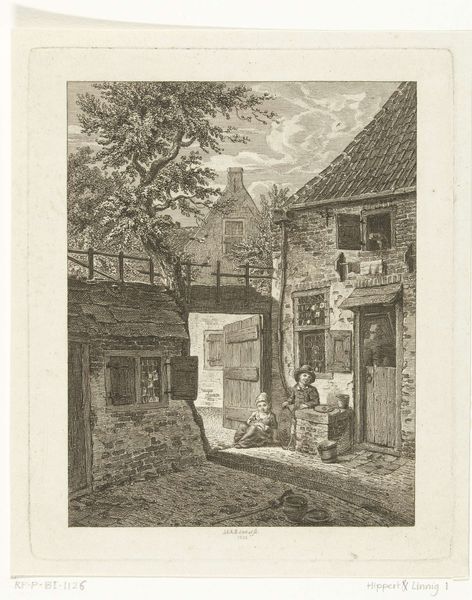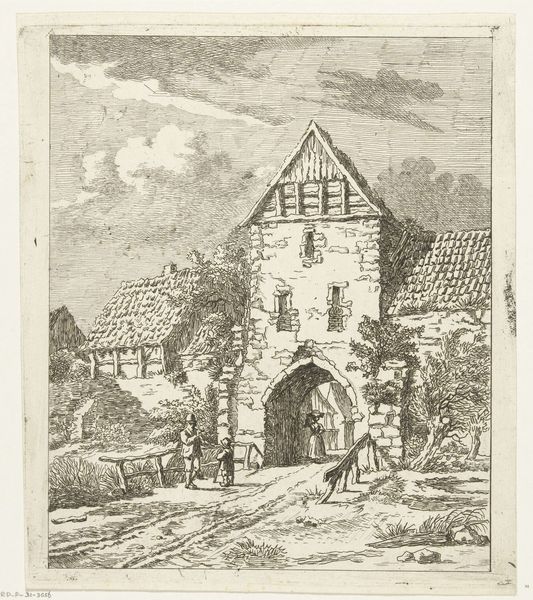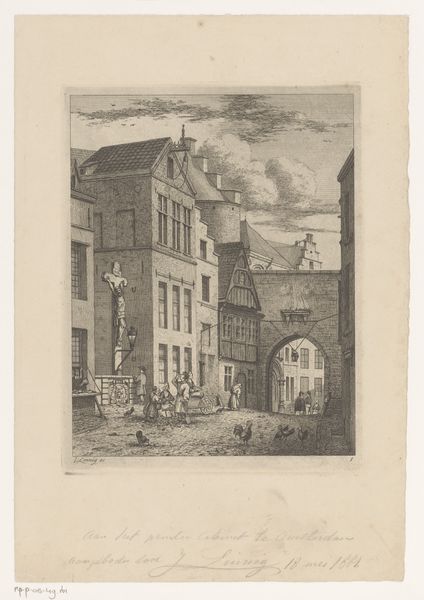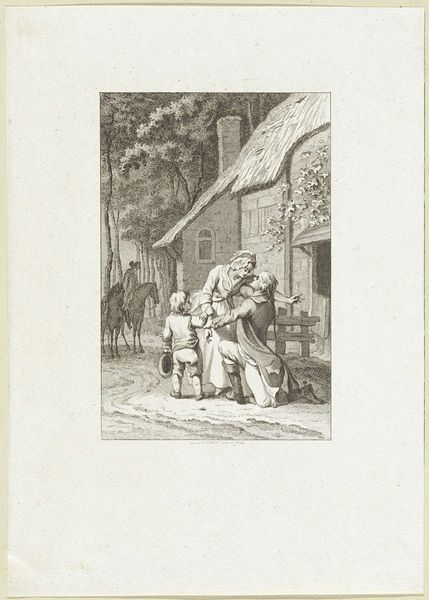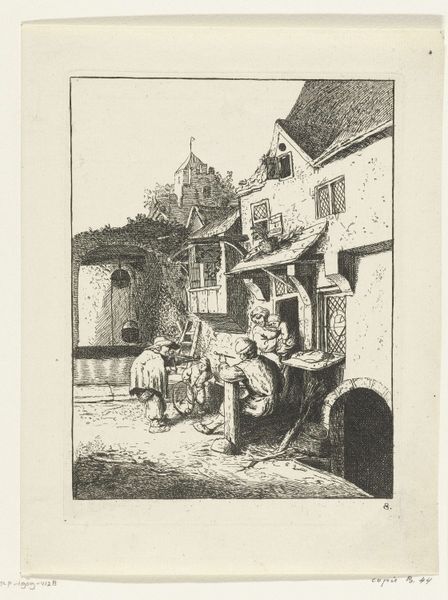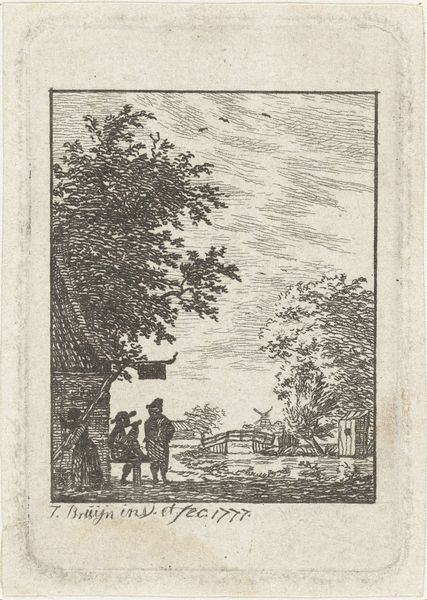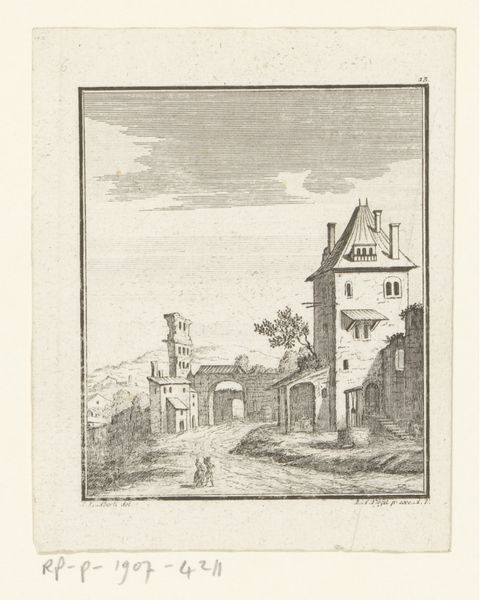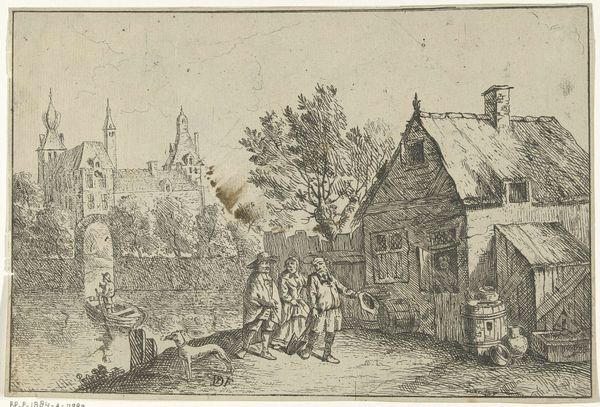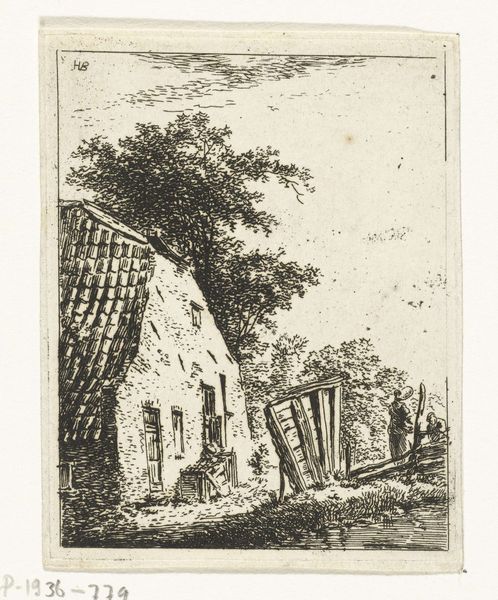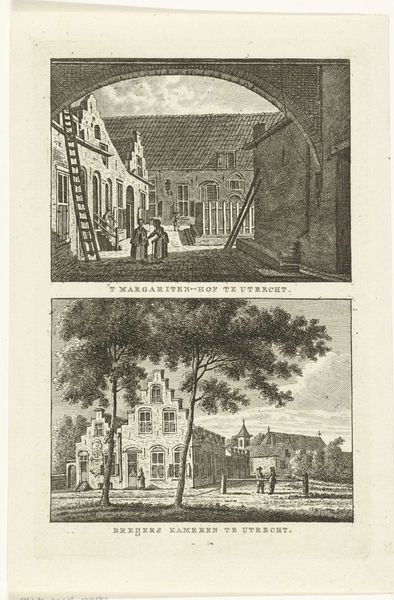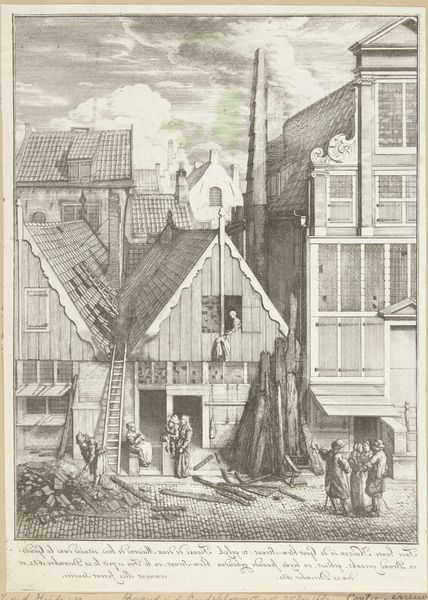
print, etching
#
dutch-golden-age
# print
#
etching
#
old engraving style
#
landscape
#
child
#
cityscape
#
genre-painting
Dimensions: height 269 mm, width 223 mm
Copyright: Rijks Museum: Open Domain
Curator: Here we have "Binnenplaats met man en vrouw en spelende kinderen," dating roughly from 1807 to 1855, an etching by Johannes Alexander Rudolf Best. Editor: It’s quite charming! A quiet, domestic scene bathed in subtle light, almost nostalgic. There's such a sense of contained, simple pleasures. Curator: Best captures a scene common to the Dutch Golden Age—the domestic sphere idealized and placed within a specific societal context. Observe the positioning of the figures; the man seemingly observing the scene from the periphery, the woman drawing water, the children playing. There's a clear hierarchy here reflecting 19th-century gender roles. Editor: Yes, but I also see a lot of focus on the materials themselves. Look at the texture rendered through the etching; the rough stone of the buildings, the woven quality of the baskets, even the quality of the children’s clothing implies the labor and material inputs of everyday life. It grounds the idealism. Curator: And that focus arguably serves to reinforce those same societal constructs. The buildings provide the framework, they enclose, they define. What’s depicted isn’t simply a genre painting but also a subtle commentary on the economic realities that underpinned this domestic tableau. The etched lines almost become a form of social inscription. Editor: True, but the craft involved speaks volumes. Someone carefully and painstakingly created this plate. The image circulated widely, not just to the elite but to a broader audience eager for these scenes. It's not just what’s shown, but how the medium democratized the distribution of images of the home, its values and the manual work ingrained into it. Curator: It is certainly successful in that sense; etching provided a cost-effective method of replicating and distributing images, thereby contributing to the construction and maintenance of specific social values. These images shaped perceptions. Editor: I find that examination of the labor within and the labor behind are equally fascinating. This artwork encourages consideration for the value we attach to domestic work, family structures and how they manifest in material objects and the prints which depict it. Curator: An intricate layering of social history brought to life through the meticulous lines of an etching! Editor: Precisely, the hand and its labor reflected within and without!
Comments
No comments
Be the first to comment and join the conversation on the ultimate creative platform.

